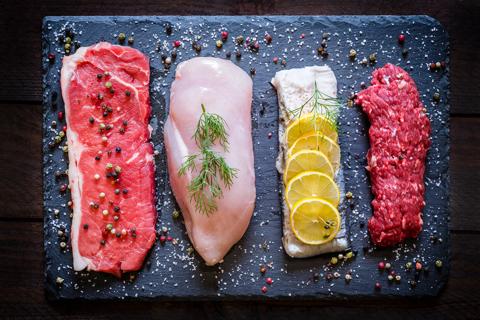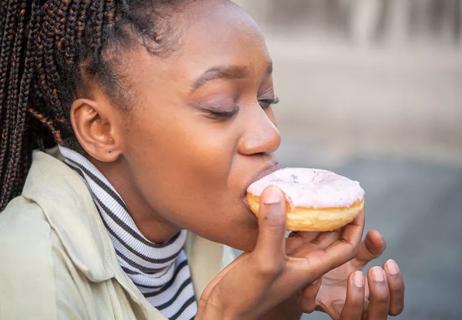Set yourself up for success by carefully choosing your recipes, storage containers and prepping day

If your plan to churn out healthy homemade dinners all week tends to come completely unraveled by Thursday, you’re not alone. Healthy eating can easily fall by the wayside when you’re juggling a busy schedule and lots of responsibilities.
Advertisement
Cleveland Clinic is a non-profit academic medical center. Advertising on our site helps support our mission. We do not endorse non-Cleveland Clinic products or services. Policy
Meal prepping is a tried-and-true trick that many healthy eaters swear by to save time and keep them on track.
“Meal prepping is a great way to save yourself both time and money, and it goes a long way toward reducing the stress of not knowing what to eat,” says registered dietitian Elyse Homan, MS, RD, LD.
Meal prepping means preparing or batch-cooking meals, snacks or ingredients ahead of time, to make healthy eating easier during your busier days.
“You can quickly make multiple days’ worth of food and then not worry about meals the rest of the week,” Homan explains.
Plus, knowing you have something waiting in the fridge might make you less likely to swing through the drive-thru for lunch or order takeout for dinner.
Meal prepping also:
Advertisement
All of this can make meals more enjoyable and less stressful. And meal prepping may even help you lose weight, if that’s one of your health goals.
“Meal prepping and planning helps you to eat more consistently throughout the day,” Homan says. “Knowing you have something already prepared can help you to eat at a similar time each day, which helps control hunger levels and prevents overeating.”
Does the term ”meal prepping” make you think about bland chicken breast, rice and green beans perfectly portioned out into a week’s worth of containers? Let’s first back up and rework that mental imagery.
There’s no one way to master the art of meal prep — and that’s part of the beauty of it. It’s a strategy that can be adapted to your unique schedule and lifestyle to help you become more efficient in the kitchen.
For one person that might mean making a week’s worth of breakfasts and lunches that they can reheat at work. For another, it might mean just chopping up some extra veggies and making a homemade salad dressing to use throughout the week. Meal prepping can include:
All of these are totally valid ways to meal prep, and when you’re getting started, you may want to experiment with one or all of them to see what you like best. Whatever your meal prep style or reason, here’s how to get started.
Before you even begin considering what you’re going to make, it’s important to think through how you’ll keep everything fresh and organized.
“I recommend choosing containers that are microwave-safe for hot lunches,” Homan says. “Mason jar salads are also a good way to help ingredients stay fresh for several days in the fridge.”
Just be sure that you also have some small containers on hand to store sauces and dressing separately. No one likes a soggy salad!
Oh, and don’t forget about what will go in your freezer.
“You can freeze soups and chilis in smaller containers so you only have to heat up what you’ll eat for the week,” Homan shares, “and you can also portion out ingredients for smoothies ahead of time.”
One of the big ideas behind meal prep is making it a habit, so you want to identify a day when you can consistently set aside time for it. And because meal prep takes time, it’s important to pick a day when you actually have time.
“Make sure it’s a day where you have a few hours to spend,” Homan advises. Sunday and Wednesday are popular meal prep days, but choose whichever day works best for your schedule.
Advertisement
Now that you’ve picked a day and time, you’ll want to ask yourself (and answer!) these questions:
It’s time for the fun part: Deciding what to make! Homan shares her best tips for figuring out what you’ll prep for the week.
Advertisement
Still can’t quite figure out where to start? There’s no need to reinvent the wheel. Start with our list of 75 healthy meal prep ideas for breakfast, lunch and dinner. Then browse food blogs, thumb through cookbooks and ask friends for their favorite recipes.
“Keep a list or create a Pinterest Board of recipes that sound good to find inspiration before you go grocery shopping,” she adds.
Before you head to the grocery store, you’ll have to make a grocery list. This is a great time to figure out which ingredients you’ll make yourself and which you’ll buy ready-made — because not every element of a homemade meal has to be made at home.
“You don’t have to make everything from scratch,” Homan says. “Buying a rotisserie chicken, tuna packets or a veggie tray can cut down on time.” Keep frozen berries and frozen vegetables on hand, too. They’re pre-washed, pre-chopped and can be microwave-steamed in a pinch.
But there are some ready-made ingredients that are definitely worth skipping — like individually packaged foods.
“You can save money by portioning things out yourself instead,” Homan points out. “Make sure you have small, condiment- and snack-sized containers on hand to store things like salad dressing, trail mix and dips, like hummus and guac.”
Advertisement
Once you’ve made your list (and checked it twice), head to the grocery store to grab everything you need for your first foray into meal prepping.
Ready to get down to business? Make your time in the kitchen as enjoyable as possible by cranking up some tunes or turning on an audiobook or podcast.
“Prep food individually, like washing and chopping veggies for the week that can be used in a variety of recipes or as a snack with dip,” Homan says.
Once your food is made, cooled and transferred into airtight containers, it should last about three to four days in the refrigerator.
If a recipe yields more food than you can eat in a week (or if you just want to give yourself some padding for the future), pop any remaining servings into the freezer.
“That will give you a quick option for a day when you don’t feel like cooking,” she notes.
If you’re groaning at the idea of eating the same thing for a week, don’t worry: There are ways to fend off boredom when it comes to meal planning.
For starters, Homan says to be sure to choose foods you actually like — which may sound like a no-brainer but is so important that it’s worth emphasizing. When you’re brand new to meal prep, this isn’t the time to decide that you also need to revamp your entire palate — at least not to start.
“Think of meals you enjoy when dining,” Homan says, “and then see what you can do to try to recreate them at home.”
Just don’t go back to that same favorite over and over and over. Even your most beloved recipe will get old and stale if you eat it too often!
“Challenge yourself to choose one new recipe each week to keep it exciting,” Homan suggests. “You can also try sticking to weekly themes, like Meatless Monday, Taco Tuesday or Sunday brunch.”
Finally, although meal prep is a great way to help you eat healthier, don’t feel like you have to withhold or deprive yourself of little treats — especially if the meals you’re making are otherwise healthy and well-balanced.
“Include indulgent foods you enjoy as part of your meal planning to help make them enjoyable,” Homan continues. “You can still add a few chocolate chips to a Greek yogurt and berry parfait, or pack a snack-size bag of pretzels to go with chicken salad and baby carrots.”
Remember: Meal prep isn’t all-or-nothing, and there’s no definitive right or wrong way to do it. Experiment a little to find what works for you, and don’t worry about being perfect. Doing just a few steps in advance can go a long way!
Learn more about our editorial process.
Advertisement

With a focus on internal cues for hunger and fullness, this eating style may revolutionize your relationship with food

Review the ingredients, watch for sugar and fat, and choose one with the right amount of protein for your needs

A typical recommended balanced diet is half fruits and veggies, a quarter protein and a quarter grains

Foods high in protein, fiber and water can help keep hunger at bay

This quirky food trend is harmless, as long as you’re getting enough protein, fiber and healthy fats

This vital nutrient helps your brain and body in many ways — and most of us need more of it

Wrapped or sandwiched, try to choose fillings and condiments that are minimally processed, low in saturated fat and high in fiber

These breaks may have some benefits — but they promote an unhealthy attitude toward food

Start having sex about 72 hours before ovulation, then at least every other day during your fertile window

Attachment theory suggests that your earliest relationships shape connections throughout your life

It isn’t a recognized mental health disorder, but research shows that problematic social media use can negatively affect your mental health, self-esteem and sleep